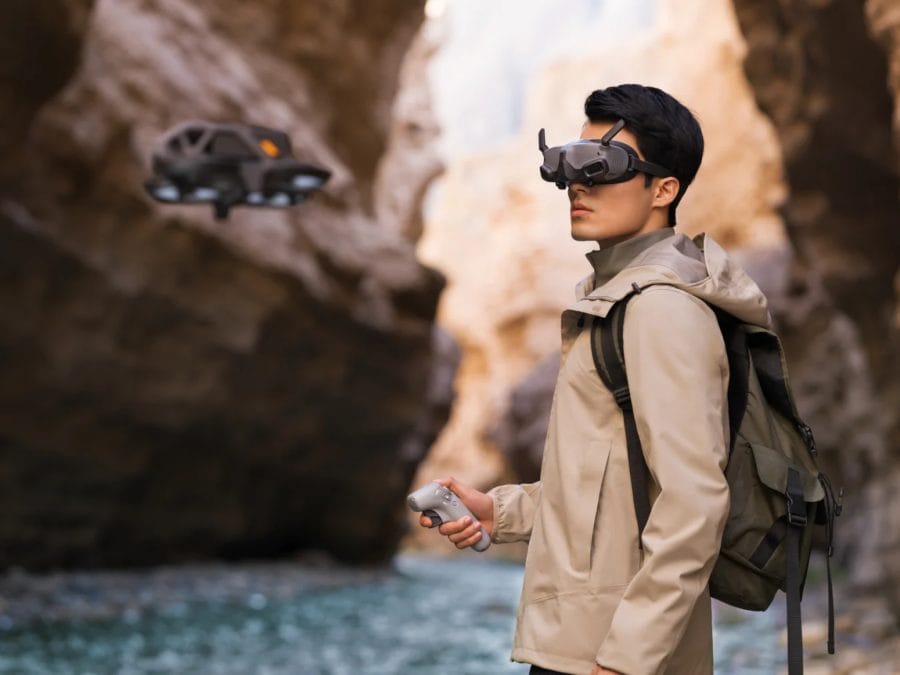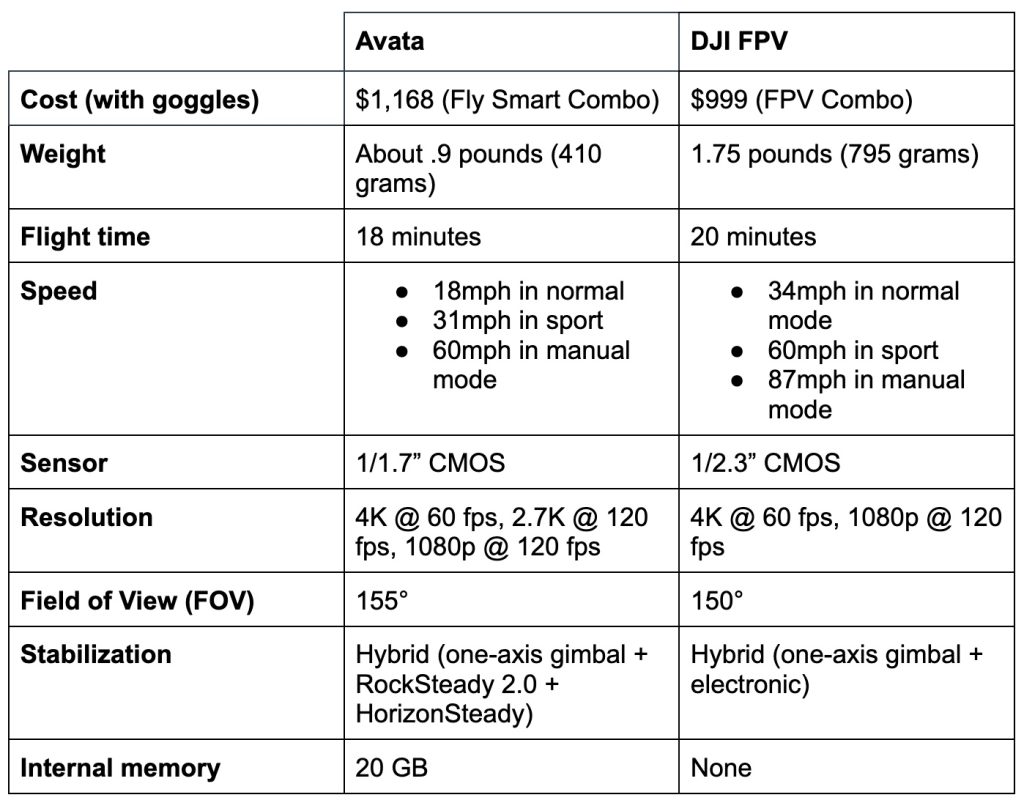DJI Avata vs. DJI FPV—Which One Is Right for You?
BY Zacc Dukowitz
31 August 2022The DJI Avata is DJI’s latest drone, and it’s clearly some kind of FPV drone—it comes with goggles and a motion controller that responds to the pilot’s hand movements, allowing you to become immersed in the experience of flying.

The DJI Avata | Credit: DJI
But DJI already has an FPV drone, called the DJI FPV.
So what’s the difference between the Avata and the DJI FPV? And—assuming you’re on the market for an FPV drone—how can you decide which one is right for you?

The DJI FPV | Credit: DJI
Cinewhoops vs. FPV Drones
The first distinction to make between the Avata and the DJI FPV is that the Avata is a cinewhoop and the DJI FPV is more strictly an FPV drone.
So what’s the difference?
[Related read: The Best FPV Drones: A Complete Guide]
Cinewhoops are made for high quality FPV fly throughs, like the ones that have become so popular over the last few years. These are those videos like the one shown below, featuring behind-the-scenes tours of stadiums, music venues, and other businesses.
Here are the most distinctive features of cinewhoops:
- Smooth flight. Cinewhoops are made to capture smooth aerial shots, often in tight places like the insides of rooms or hallways, or under or through obstacles like tree branches or shelves.
- Indoor flight protection. Cinewhoops can be recognized by the protective ducts around their propellers—when photos of the Avata were first leaked, they showed these ducts, and the internet went crazy speculating that DJI was getting into the cinewhoop market.
- High quality camera. Because cinewhoops are made for aerial cinematography they typically come with pretty good cameras, or have fairly high quality cameras like the GoPro Hero Black mounted on them.
FPV drones, on the other hand, are usually made for racing or trick flying, or both, and typically have less of an emphasis on the quality of visuals they can capture. That being said, because FPV drones can fly fast and precisely, footage from them has become popular for capturing high octane action sequences, like the one below from Michael Bey’s Ambulance (shown below).
Here are the most distinctive features of FPV drones:
- Speed. FPV drones are made to go fast, for racing or just pure trick flying.
- Agility. FPV drones are highly responsive, allowing pilots to do tricks at high speeds or to make hairpin turns on a drone race track. They also typically have low latency to allow for a high degree of sensitivity.
- Toughness. Given the high speed flying done with them, FPV drones are made to sustain crashes.


Watch this video on YouTube
Historically, both cinewhoops and FPV drones have required a fair amount of DIY knowledge.
Most skilled pilots build their own FPV drones, and even pilots who buy a cinewhoop that’s ready-to-fly out of the box may still retrofit it with a higher quality camera. (In fact, so many cinewhoop pilots were gutting GoPro Hero Black cameras to cut their weight and increase battery life that GoPro released its own stripped down version, called the GoPro Hero10 Black Bones.)
But newer cinewhoops and FPV drones, including the Avata and the DJI FPV, have been helping more people get into these niche areas of flying by offering RTF drones that don’t require any knowledge about how to build drones.
Comparing the Avata and the DJI FPV
Defining the difference between cinewhoops and FPV drones may help you navigate the difference between DJI’s two drones and figuring out which one is right for you.


Credit: DJI
If you’re interested in capturing cinematic FPV fly throughs, the Avata is probably the right choice. But if you want to fly fast, do tricks, and capture good footage while doing it, the DJI FPV may be a better choice.
(That being said, if you’re really interested in FPV racing, we suggest you find a drone made just for racing—here’s a list of our top five RTF FPV drones.)
Let’s look at a side-by-side comparison of specs and other information for the Avata and the DJI FPV.


If you’re not sure what you want, it’s worth noting that the Avata is newer, lighter, and more nimble than the DJI FPV.
It also comes with newer, lighter goggles and a motion controller instead of the joystick you get with the FPV. But it does cost more—the basic Avata combo is $1,168 while the basic DJI FPV combo is $999.
And the DJI FPV is a lot faster than the Avata—it can go up to an impressive 87 mph while the Avata can only go up to 60 mph and it has a slightly longer flight time (20 minutes vs. the Avata’s 18 minutes). If you’re looking to fly fast, do tricks, or get high-energy FPV shots, the DJI FPV is probably the better option.


